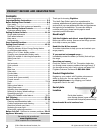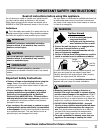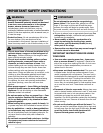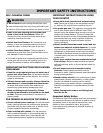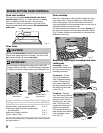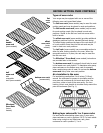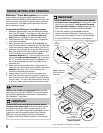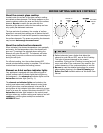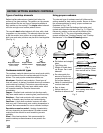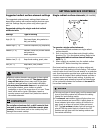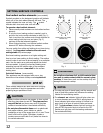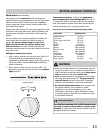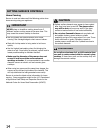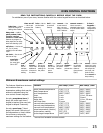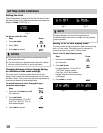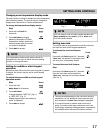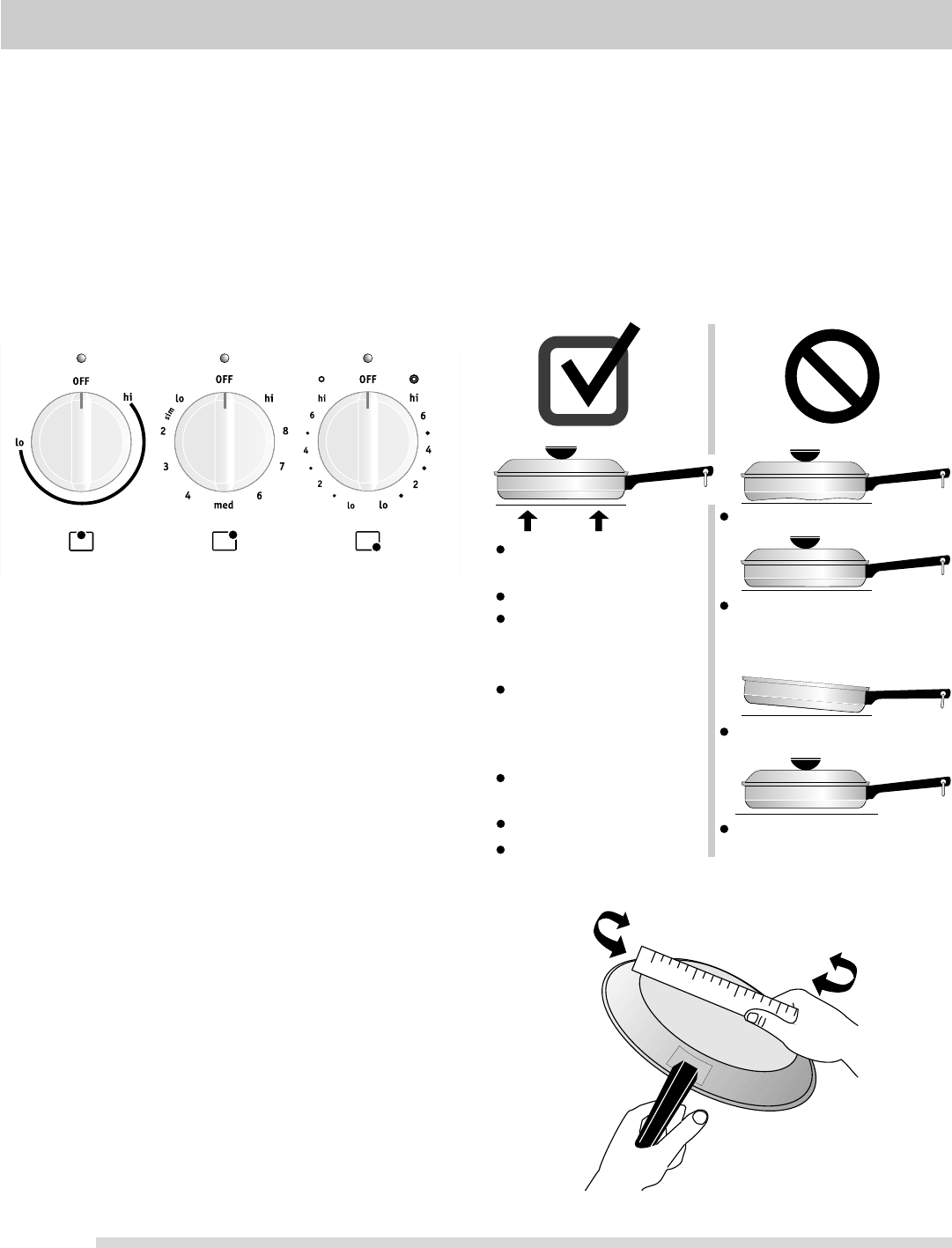
10
BEFORE SETTING SURFACE CONTROLS
Flat bottom and straight
sides.
Tight fitting lids.
Weight of handle does
not tilt pan. Pan is well
balanced.
Pan sizes match the
amount of food to be
prepared and the size of
the surface element.
Made of a material that
conducts heat well.
Easy to clean.
Always match pot
diameter to element size.
Curved and warped pan.
Panlargerthancookingarea
markedoncooktopbymore
than one-half inch or 12mm.
Heavy handle tilts pan.
Pan is smaller or larger
than heating area marked
on cooktop.
Keep warm zone
surface control
(some models)
Single radiant
surface control
Dual radiant
surface control
(some models)
Cookware material types
The cookware material determines how evenly and quickly
heat is transferred from the surface element to the pan
bottom. The most popular materials available are:
Aluminum - Excellent heat conductor. Some types of
food will cause it to darken (Anodized aluminum cookware
resists staining & pitting). If aluminum pans slide across
the ceramic cooktop, they may leave metal marks which
will resemble scratches. Remove these marks
immediately.
Copper - Excellent heat conductor but discolors easily.
May leave metal marks on ceramic glass (see Aluminum).
Stainless - Slow heat conductor with uneven cooking
results. Is durable, easy to clean and resists staining.
Cast Iron - A slow heat conductor however will retain
heat very well. Cooks evenly once cooking temperature is
reached. Not recommended for use on ceramic cooktops.
Porcelain-enamel on metal - Heating characteristics
will vary depending on base material. Porcelain-enamel
coating must be smooth to avoid scratching ceramic
cooktops.
Glass - Slow heat conductor. Not recommended for
ceramic cooktop surfaces because it may scratch the
glass.
Using proper cookware
The size and type of cookware used will influence the
setting needed for best cooking results. Be sure to follow
the recommendations for using proper cookware as
illustrated in Figs. 2 & 3.
Cookware should have flat bottoms that make good
contact with the entire element (See Fig. 2). Check for
flatness by rotating a ruler across the bottom of the
cookware (Fig. 3). For more information about the
ceramic cooktop see "Cooktop Cleaning" and "Cooktop
Maintenance" in the Care & Cleaning section.
Fig. 2
Fig. 1
Types of cooktop elements
Radiant surface elements are located just below the
surface of the glass cooktop. The patterns on the ceramic
glass outlines the size and type of element available at
each position on the cooktop. The single radiant element
will have a single round outline pattern shown.
The versatile dual radiant element will show with a dual
ring pattern on the cooktop. This element allows the user
to set the smaller inner portion as a single element or
both inner and outer portions may be set to heat together
(See Fig. 1).
Fig. 3



